Mining the waste stream
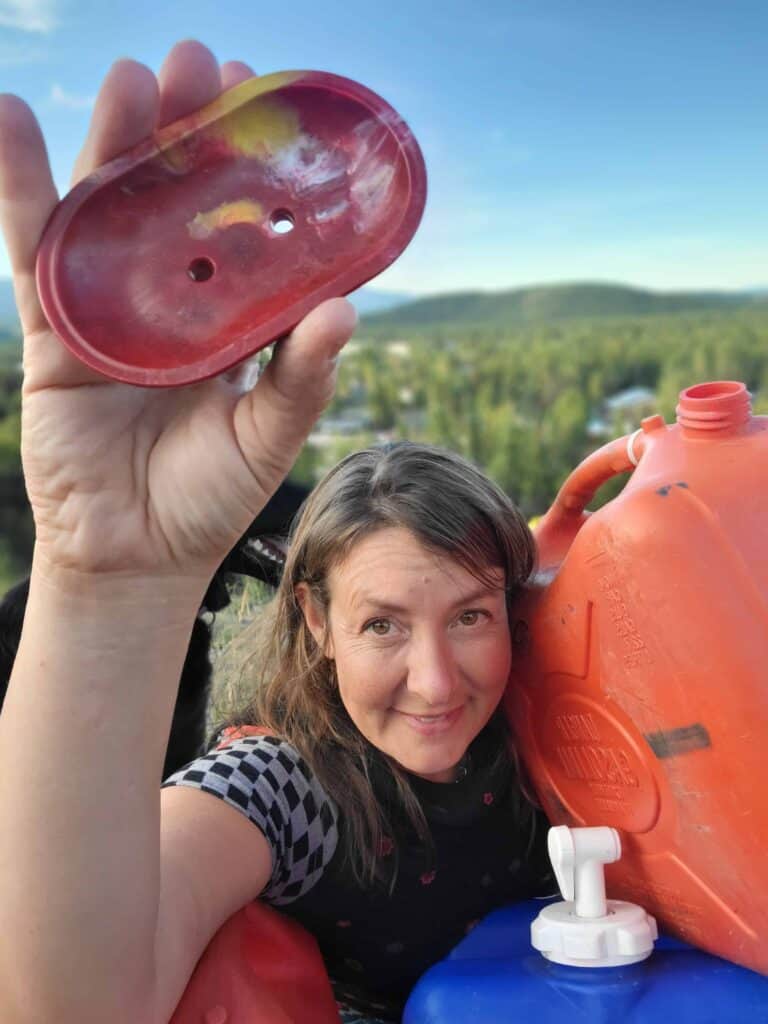
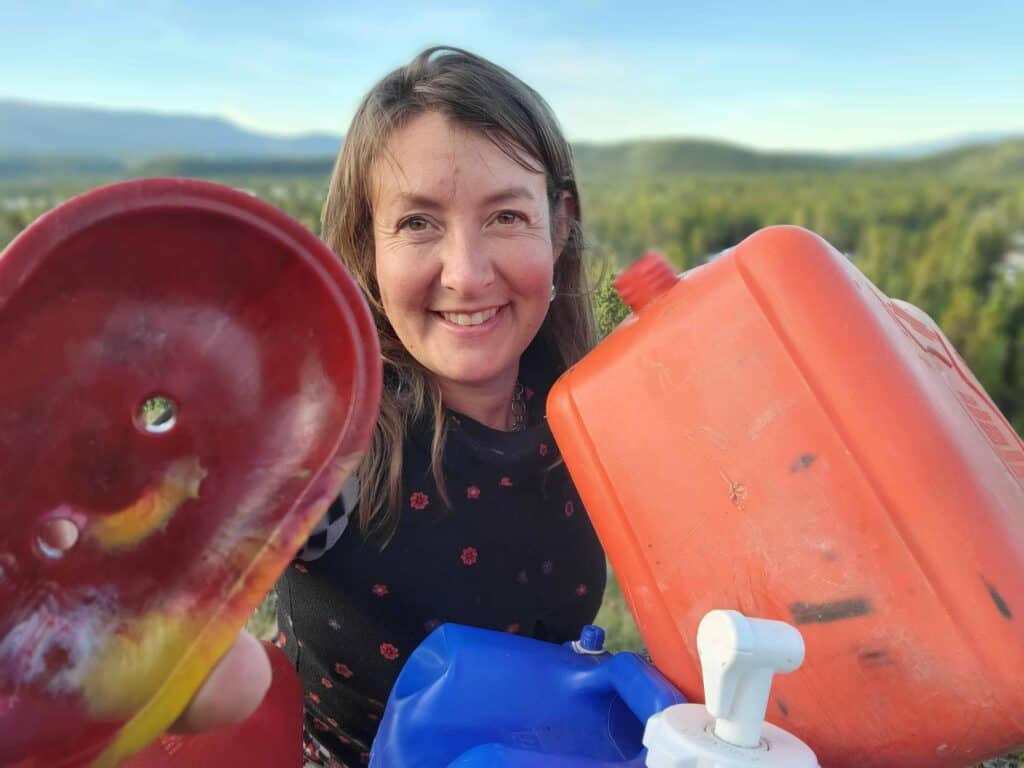
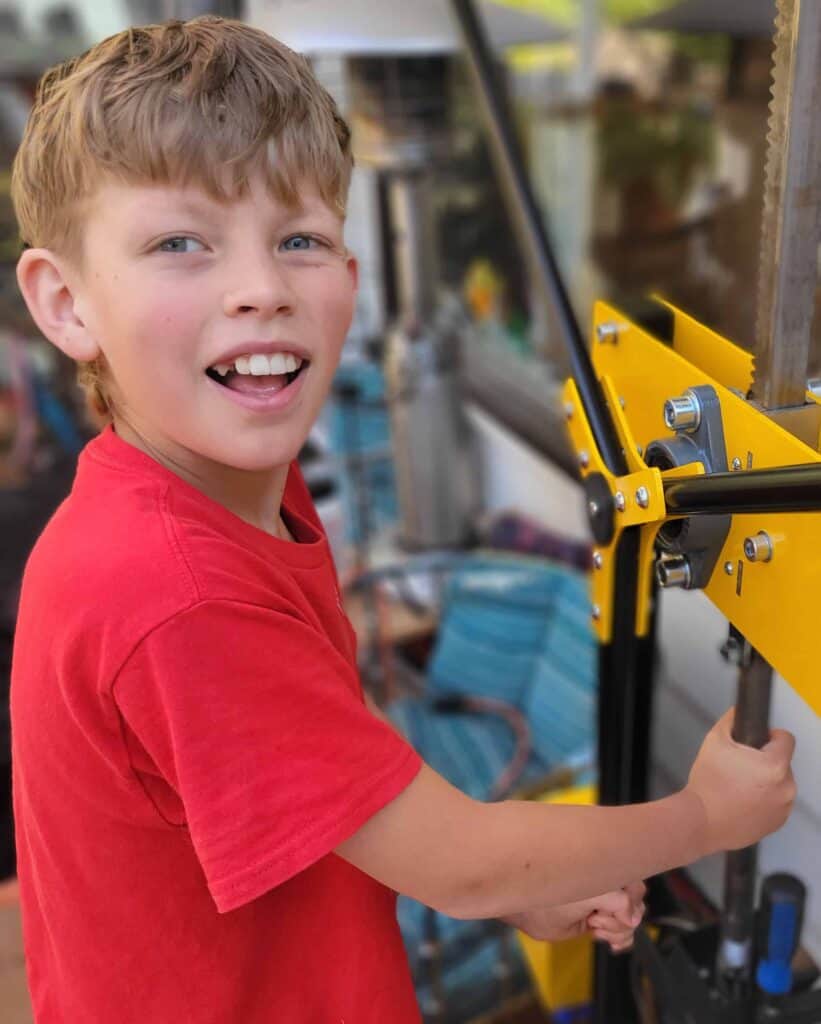
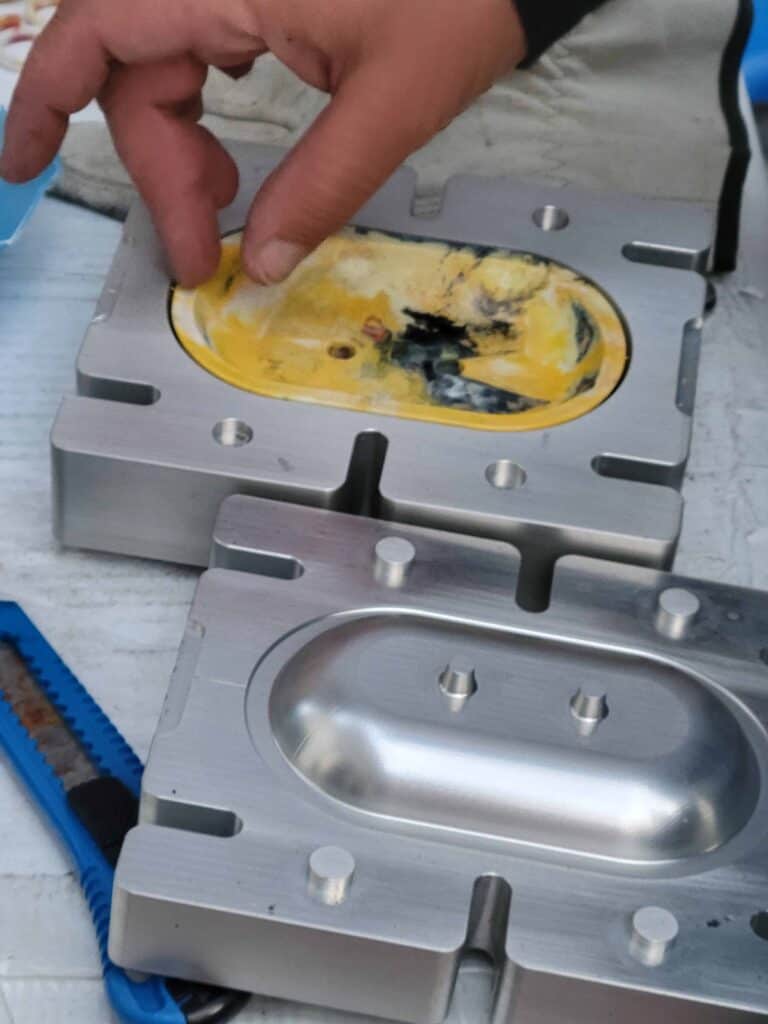
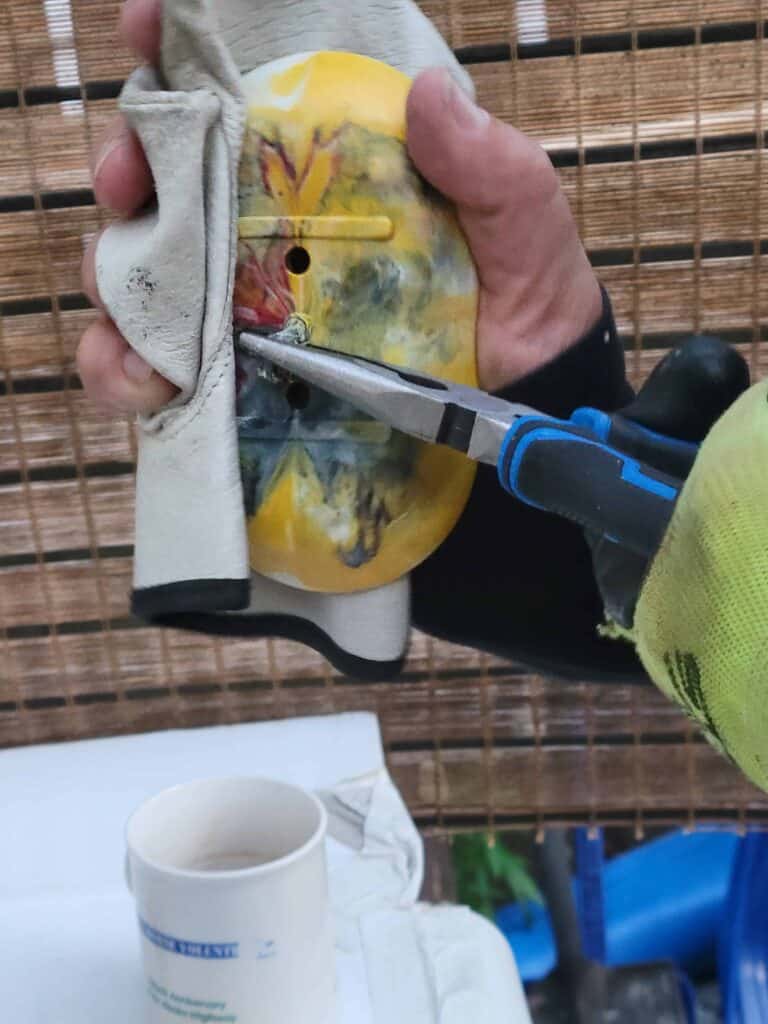
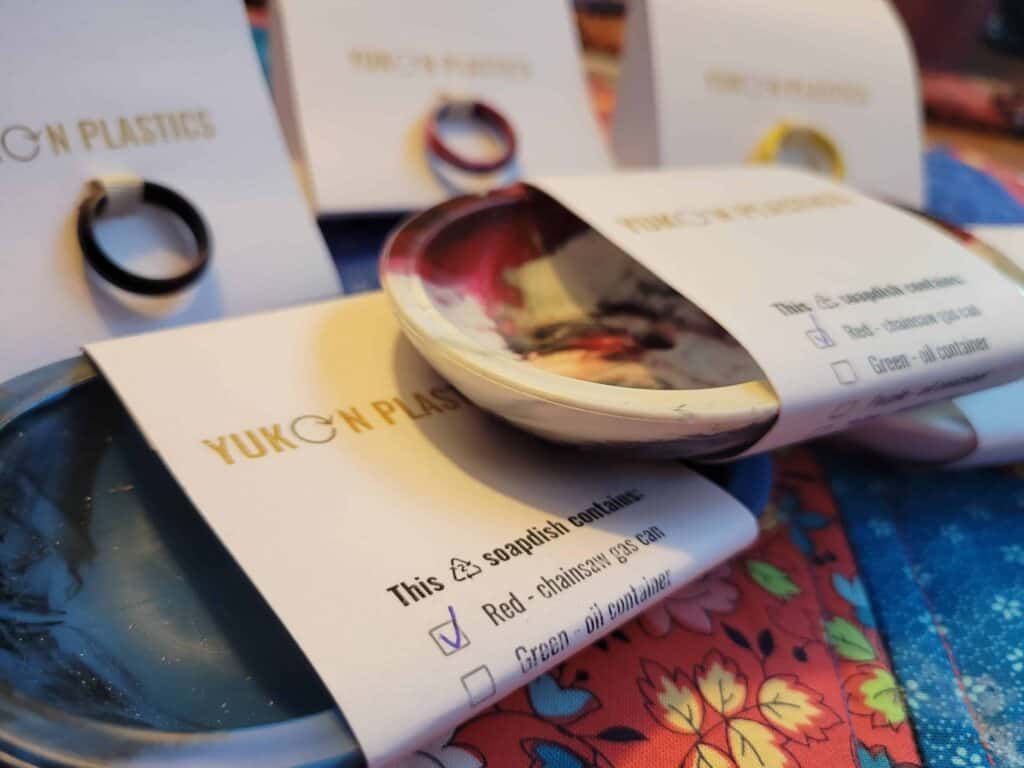
Janna Swales wants to make plastic “something” to treasure. But to make a real difference, she has her sights set on working on a larger scale.
Swales breaks pieces off of my old leaky blue jug and puts it in her extruder.
“The great thing about this blue jug you gave me is the brittleness of the old plastic. If I score it with an Exacto Knife, it just snaps off.”
Her extruder unit heats the plastic up to 210℉ so it can be pressed into a computer-cut solid aluminum mould. Inside the extruder, the blue colour swirls with the yellow she was using earlier.
Swales is envisioning a line of unique Yukon housewares made of type 2 and 5 plastics from the recycling stream. She wants to pursue this as a business, eventually including a factory to produce her wares. She wants to do things on a scale to make a real difference in the plastic that either ends up in the landfill or is shipped down the highway to recycling plants.
“Anything to do with plastic lumber … say, it doesn’t make sense to do it in the Yukon,” says Swales, gesturing at our economies of scale. Things like that “can be done cheaper elsewhere.”
So she wants to do things with Yukon flavour. Things that have to do with an awareness of the way we use materials. “If someone has some kind of homeware piece, made of Yukon plastic, that got removed from the waste stream, what could that mean?”
About five years ago, Swales was wondering if there was something that could be done with plastic. She melted down a bunch of plastic in her oven and made a cutting board. Although it was warped and blemished, she noticed it gave her a good feeling. “There’s something pleasing about taking this stuff that you throw away, removing the label of trash and making it into something.” She has since cut up that cutting board and made it into something new.
While that cutting board was a good test, Swales realized that melting plastic in her own oven wasn’t really a good idea. In the meantime, she reflected on what she had learned, as she lived with that cutting board in her kitchen.
In the winter of 2022–23, Swales moved into action when she felt she had developed a workable idea, based both on reflecting and prototyping.
Then she got a reasonable income tax return and decided to buy the proper equipment, all the way from Britain. “It came in a million pieces. Not even the wires were attached. It was like Ikea. But it was very challenging, serious electronics. This was high stakes—I had spent thousands of dollars on it. But I applied myself and it happened.”
The aluminum mould has finished warming. Swales puts the bolted mould in place and starts to turn the three-pronged handle like the helm of a ship. This thrusts a plunger into the extruder. She even uses her foot to turn it. In just a few turns, it’s done. She loosens the bolts on the mould with two wrenches. It worked! She twists the plastic plug off with pliers. Still yellow. Maybe the next one will be blue.
Swales has the moulds to make simple finger rings and soap dishes. She’s thinking a mould for a rolling pin could be a good next step. Then maybe forks, knives and spoons. Bangle bracelets, perhaps.
At this stage, the type 2 plastic that her friends drop off at her porch sustains her level of production.
Swales is currently working at the Yukon Transportation Museum as a “museumist.” She has worked there for 13 years.
She’s partly inspired by the idea that there’s a long history of reuse in the Yukon, that’s only stopped recently. She recalls how Alice Cyr told her a story about her husband Paul Cyr. When he was a kid, he lost a button off his jacket when he was playing. He and his friends stopped the game and looked for that button in the snow, until he found it. He knew there wasn’t a good way to get a new button back then.
In Hootalinqua, there’s a place that’s roofed with oil cans, with the top and bottom taken off, made into roof tiles. All kinds of packaging was reused in so many ways in the Yukon.
This project grows out of Swales’ interest in how things work. In terms of her historical interests, complicated things (like the way people create historical supply chains or energy networks) intrigue her.
Last year was the 80th Anniversary of the Alaska Highway. At the start of World War II, there was a scarcity of many supplies. Synthetic clothing invented partly to fill that void. With the end of WWII, synthetic and plastic manufacturers were looking to the consumer market to sell their wares. Swales observes that we can date the arrival of plastics in the Yukon to the arrival of the Alaska Highway.
“I thought that was extremely interesting, and in some ways it made me mad at the highway. Plastics are such an encompassing problem in the Yukon, from microplastics onwards.”
But still, inspired by Yukon history of ingenious reuse, Swales says she wants to “see how we can build circularity into how we think about plastic products.”
The story of the materials adds meaning to her work. My blue jug returns to me as a beautiful soap dish. Swales’ sweetheart gave her broken jerry cans. He has a red soap dish now. Swales can use automotive fluid jugs that Raven Recycling can’t take.
Anne Middler, of the Kicksled Revolution, gave Swales the blue scraps trimmed from kicksled runners. Her store now carries soap dishes made from blue kicksled scraps.
In the short-term, you will be able to find Swales’ products at the 12 Days of Christmas Community Market, this winter, and at Middler’s downtown shop. Watch for other venues.
In the long-term, Swale believes “the only way that a consequential amount of plastic can be removed from the waste dynamic of the Yukon is at the factory scale. There’s a huge amount of plastic that either winds up in the landfill or gets shipped down the highway. It travels a long way to go get recycled.
“What if we just did it here and created a blueprint for other northern communities to do this?”
Swales aims to be the Chamber of Commerce’s Best New Business of the Year, next year. And onwards. You can follow Yukon Plastics at yukonplastics.com




